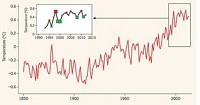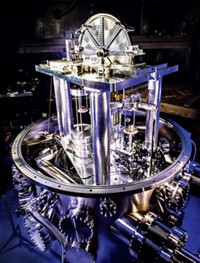Advertisement
Grab your lab coat. Let's get started
Welcome!
Welcome!
Create an account below to get 6 C&EN articles per month, receive newsletters and more - all free.
It seems this is your first time logging in online. Please enter the following information to continue.
As an ACS member you automatically get access to this site. All we need is few more details to create your reading experience.
Not you? Sign in with a different account.
Not you? Sign in with a different account.
ERROR 1
ERROR 1
ERROR 2
ERROR 2
ERROR 2
ERROR 2
ERROR 2
Password and Confirm password must match.
If you have an ACS member number, please enter it here so we can link this account to your membership. (optional)
ERROR 2
ACS values your privacy. By submitting your information, you are gaining access to C&EN and subscribing to our weekly newsletter. We use the information you provide to make your reading experience better, and we will never sell your data to third party members.
Policy
How Much Does That Gnome Weigh?
July 23, 2012
| A version of this story appeared in
Volume 90, Issue 30
As a physicist and ACS member, I enjoy the Newscripts articles each week. The article about the Gnome Experiment was very interesting (C&EN, April 16, page 56). (For more information on the experiment itself, see www.gnomeexperiment.com.) However, the sentence that partially tries to explain the effect of the gnome weighing more at the poles than at the equator is slightly confusing: “That’s partly because at the poles, the inertia produced by Earth’s rotation is far stronger.”
The explanation for the variation in weight at different locations is a rather complicated issue involving the centripetal force vector caused by gravity, Earth’s nonspherical shape, inhomogeneities in Earth’s mass, and more.
In layman’s terms, the dominant effect can be visualized by imagining an observer in space looking down on the Earth-gnome system (assuming a spherical Earth). At the equator the gnome is being “thrown outward” from the center of Earth more than it would be when on either of the poles because of the difference in the rotational velocities. Thus the weight of the gnome at the equator would be due to the downward force (toward the center of Earth) of gravity reduced by the upward (outward from the center of Earth) “quasi-force” caused by the rotation.
The upward quasi-force is referred to as a quasi-force because it is described differently depending on whether one is in the rotating reference frame (with the gnome) or in the nonrotating reference frame (with the observer in space). This situation is somewhat similar to that on a merry-go-round where you can feel the quasi-force the farther out from the center you are located. Along with other minor effects, the total weight variation can be as much as 0.5% depending on the location.
My explanation is also slightly confusing because of the necessity of using rotating reference frames, vectors, quasi-force, etc.; however, the Gnome Experiment is interesting enough to justify digging into the details. Having read the article, I hope to participate in the experiment.
By Ralph H. Hill Jr.
San Antonio





Join the conversation
Contact the reporter
Submit a Letter to the Editor for publication
Engage with us on Twitter